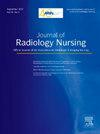“Optimizing Peripheral Intravenous Catheter Outcomes: A Systematic Meta-Analysis of Educational Innovations, Technological Advancements, and Protocol-Based Strategies”
Q3 Nursing
引用次数: 0
Abstract
Aims
This meta-analysis evaluates the effectiveness of interventions, educational strategies, and technological advancements in managing peripheral intravenous catheters (PIVCs), focusing on PIVC-related complications, insertion success, and patient outcomes.
Design
A systematic review and meta-analysis were conducted on studies published between 2014 and 2024, assessing educational interventions, training programs, technological innovations, and best practices.
Data Sources
Peer-reviewed articles, systematic reviews, and clinical trials from PubMed, Cochrane Library, and Scopus were included, with key studies by Elasyed et al. (2020), Yilmaz et al. (2023), Arslan & Takman (2022), and Overton (2021).
Review Methods
Studies were selected based on relevance, evidence quality, and methodological rigor. Data focused on intervention types, success rates, complications, and patient safety.
Results
The meta-analysis synthesized data from 38 studies (12 randomized controlled trials, 15 cohort studies, 7 systematic reviews, 4 observational studies). Simulation-based training (15 studies) improved insertion success by 22% (95% confidence interval [CI]: 15–30%) and reduced complications by 18% (95% CI: 10–25%). Structured educational programs (10 studies) as Ahlin (2013) increased knowledge by 20% (95% CI: 13–27%) and reduced complications by 15% (95% CI: 8–22%). Technological innovations, such as intelligent infusion devices (5 studies), increased accuracy by 25% (95% CI: 18–32%) and reduced errors by 20% (95% CI: 12–28%). Advanced securement devices (5 studies) reduced dislodgement by 30% (95% CI: 22–37%) and complications by 25% (95% CI: 18–32%). Bundle care approaches (8 studies) reduced infections by 30% (95% CI: 22–38%) and complications by 20% (95% CI: 15–26%). Standardized protocols (12 studies) improved catheter patency by 22% (95% CI: 16–28%) and reduced infections by 17% (95% CI: 11–23%). Assessment tools (7 studies, eg, Angles et al., 2021) improved care quality by 25% (95% CI: 18–32%) and procedural checklists (3 studies eg, Buckley, Gilbert, 2019) increased adherence to aseptic techniques by 20% (95% CI: 12–28%) and reduced contamination by 15% (95% CI: 8–22%).
Conclusion
The meta-analysis highlights the effectiveness of educational interventions, technological innovations, and best practices in improving PIVC management and patient outcomes, underscoring the need for further research to refine training methods and integrate new technologies.
优化外周静脉导管效果:教育创新、技术进步和基于协议的策略的系统荟萃分析
目的:本荟萃分析评估了外周静脉导管(pivc)管理的干预措施、教育策略和技术进步的有效性,重点关注pivc相关并发症、插入成功率和患者预后。DesignA对2014年至2024年间发表的研究进行了系统回顾和荟萃分析,评估了教育干预、培训计划、技术创新和最佳实践。数据来源包括来自PubMed、Cochrane Library和Scopus的同行评议文章、系统评价和临床试验,主要研究来自Elasyed et al.(2020)、Yilmaz et al.(2023)、Arslan &;塔克曼(2022)和奥弗顿(2021)。综述方法根据相关性、证据质量和方法严谨性选择研究。数据集中于干预类型、成功率、并发症和患者安全性。结果meta分析综合了38项研究的数据(12项随机对照试验,15项队列研究,7项系统评价,4项观察性研究)。基于模拟的训练(15项研究)将插入成功率提高了22%(95%置信区间[CI]: 15 - 30%),将并发症减少了18% (95% CI: 10-25%)。结构化的教育项目(10项研究),如Ahlin(2013)增加了20%的知识(95% CI: 13-27%),减少了15%的并发症(95% CI: 8-22%)。技术创新,如智能输液器(5项研究),将准确率提高了25% (95% CI: 18-32%),将错误率降低了20% (95% CI: 12-28%)。先进的固定装置(5项研究)减少了30%的脱位(95% CI: 22-37%)和25%的并发症(95% CI: 18-32%)。一揽子护理方法(8项研究)减少了30%的感染(95% CI: 22-38%)和20%的并发症(95% CI: 15-26%)。标准化方案(12项研究)使导管通畅率提高了22% (95% CI: 16-28%),感染率降低了17% (95% CI: 11-23%)。评估工具(7项研究,如Angles等,2021)将护理质量提高了25% (95% CI: 18-32%),程序检查清单(3项研究,如Buckley, Gilbert, 2019)将无菌技术的依从性提高了20% (95% CI: 12-28%),并将污染降低了15% (95% CI: 8-22%)。结论荟萃分析强调了教育干预、技术创新和最佳实践在改善PIVC管理和患者预后方面的有效性,强调了进一步研究完善培训方法和整合新技术的必要性。
本文章由计算机程序翻译,如有差异,请以英文原文为准。
求助全文
约1分钟内获得全文
求助全文
来源期刊

Journal of Radiology Nursing
Nursing-Advanced and Specialized Nursing
CiteScore
0.80
自引率
0.00%
发文量
95
审稿时长
57 days
期刊介绍:
The Journal of Radiology Nursing promotes the highest quality patient care in the diagnostic and therapeutic imaging environments. The content is intended to show radiology nurses how to practice with compassion, competence, and commitment, not only to patients but also to the profession of nursing as a whole. The journal goals mirror those of the Association for Radiologic & Imaging Nursing: to provide, promote, maintain , and continuously improve patient care through education, standards, professional growth, and collaboration with other health care provides.
 求助内容:
求助内容: 应助结果提醒方式:
应助结果提醒方式:


